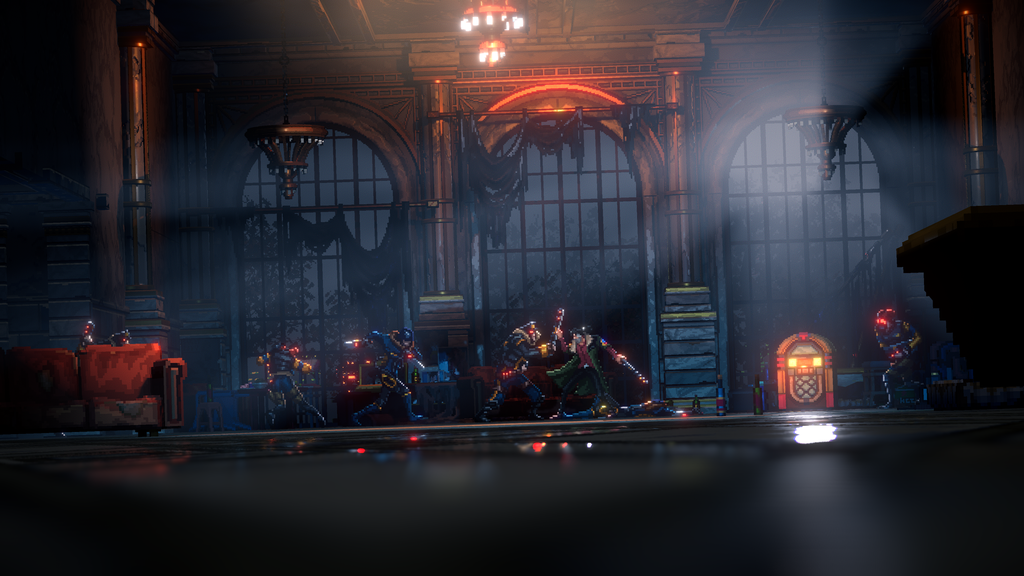The Fusion of Retro and Futuristic: Understanding Retrofuturism in Gaming
Retrofuturism is a cultural movement that blends past aesthetics with futuristic concepts. It reflects an interpretation of how the future was envisioned in earlier eras, often characterized by an optimistic outlook on technology, innovation, and design. Within the realm of gaming, particularly in platformers, retrofuturism holds significant importance as it creates a unique visual and emotional experience that resonates with players. By employing pixel art, developers tap into the nostalgia of retro gaming while skillfully incorporating elements that allude to a speculative future.
Pixel art serves as a vital medium for conveying retro aesthetics in games. It evokes memories of earlier video games from the 1980s and 1990s, characterized by limited color palettes and blocky graphics. This art form not only celebrates the technological limitations of its time but also allows for a creative expression that aligns with futuristic themes. By overlaying traditional pixel designs with modern interpretations of futurism, game designers craft environments and characters that marry the old with the new. This fascinating visual juxtaposition leads to a deeply engaging player experience, as players are often drawn into worlds that feel both nostalgic and innovative.
The historical context of retrofuturism within gaming can be traced through various titles that have successfully blended these themes. For instance, games like “Celeste” and “Hyper Light Drifter” illustrate how pixel art can depict not just retro aesthetics, but also futuristic settings and narratives. These games invite players to explore immersive worlds that harmoniously integrate the design philosophies of both the past and the future. By examining these successful examples, it becomes apparent that retrofuturism in gaming not only influences the visual style but enhances gameplay, ultimately crafting a complex tapestry of experiences that resonate with a diverse audience.
Creating a Dark Atmosphere: The Role of Art and Sound Design
The creation of a dark atmosphere in retrofuturistic pixel art platformers is a nuanced process that relies heavily on the principles of art and sound design. Central to achieving this are the meticulous choices of color palettes, the strategic use of shadows, and the manner in which visual storytelling unfolds throughout the game. Pixel art, with its inherent limitations and specific aesthetic, allows for unique atmospheric effects that can evoke powerful emotional responses from players. For instance, a darker color palette, utilizing shades of deep blues, blacks, and ominous reds, can set a tone that forebodes danger and mystery. These colors work in tandem with well-placed shadows that create depth and intrigue, drawing players into a visually arresting world.
Moreover, the role of visual storytelling cannot be overstated. The pixelated art form often conveys narratives through the meticulous crafting of scenes and environments, where each pixel serves a purpose in expressing the game’s underlying themes. This intentional design can effectively immerse players into a haunting world, where every level contributes to a broader, cohesive narrative of dread and exploration. An excellent example can be found in games like “Hyper Light Drifter,” which masterfully employs its pixel art style to evoke a sense of isolation and adventure, making the atmosphere more palpable.
Equally essential to establishing a dark ambiance is the sound design that complements the visual elements. Soundscapes filled with eerie notes, subtle mechanical sounds, and ambient noise enhance the retrofuturistic setting, deepening the immersion. Incorporating music that reflects tension, such as low, resonant tones or high-pitched strings, can amplify the emotional stakes faced by players. “Inside,” for example, is known for its chilling sound design that reinforces the game’s grim atmosphere, illustrating how these auditory elements can turn an ordinary gameplay experience into an unforgettable auditory journey. By blending art and sound effectively, creators of pixel art platformers craft immersive environments that resonate deeply with players, inviting them into the shadows of their games.
Gameplay Mechanics in a Dark Retrofuturistic Setting
In the realm of retrofuturistic pixel art platformers, gameplay mechanics are intricately designed to reflect the dark and immersive atmospheres characteristic of this genre. Players often find themselves navigating through eerie environments, where the visuals play a crucial role in shaping the overall experience. The integration of dimly lit backgrounds, distorted visuals, and haunting soundscapes creates an ambiance that heightens tension and encourages players to proceed with caution. Every jump, slide, or dash becomes a calculated decision as players traverse complex platforms suspended in an uncertain void.
The implementation of challenges, such as puzzles and adversaries, aligns seamlessly with the dark aesthetic. Puzzles may involve deciphering symbols or manipulating the environment in innovative ways, often necessitating players to explore hidden corners of the game world. This not only contributes to the storytelling but also engages players in an intricate dance between intellect and reflexes. Enemies, frequently designed to embody the unsettling themes of the retrofuturistic setting, can vary in behavior and design, ensuring that encounters remain thrilling and unpredictable.
Level design is another vital component that enhances gameplay within this genre. Each level is meticulously crafted to offer both visual and mechanical challenges. As players progress, they encounter sections that require mastering increasingly difficult platforming skills and solving more sophisticated puzzles. This ensures a balance between challenge and engagement, preventing frustration while still providing a sense of accomplishment upon overcoming hurdles. By leveraging the pixelated art style, developers catalyze a nostalgic sentiment, allowing players to engage with the visual storytelling deeply. Consequently, the gameplay mechanics in dark retrofuturistic platformers invite players to immerse themselves fully, bringing a unique blend of tension, excitement, and nostalgia to their gaming experience.
The Future of Retrofuturistic Platformers in Dark Environments
As the gaming industry continues to evolve, the future of retrofuturistic pixel art platformers set in dark environments appears promising. Game design trends reflect a growing enthusiasm for nostalgia blended with innovative storytelling. Developers are increasingly incorporating elements that resonate with players who favor atmospheric narratives steeped in mystery and intrigue. This creative direction amplifies the potential for dark-themed games to thrive, drawing inspiration from iconic retro designs while leveraging modern technology.
One notable trend is the resurgence of indie developers who often adopt a more artistic approach, using pixel art to create rich, immersive worlds reminiscent of classic games. This approach not only appeals to those who grew up with retro games but also attracts younger audiences seeking unique and visually captivating experiences. The charm of pixel art is complemented by sophisticated lighting effects and darker palettes that enhance the eerie atmospheres within these games. As technology advances, developers can harness contemporary tools, such as advanced algorithms and AI, to create more intricate and nuanced pixel art landscapes that evoke emotion.
Industry experts emphasize the significance of storytelling in dark platformers, predicting that narratives focusing on psychological themes and ethical dilemmas will become more prevalent. This shift may lead to the incorporation of branching paths and player-driven outcomes, allowing for varied experiences that heighten replayability. Additionally, innovations in augmented reality (AR) and virtual reality (VR) could redefine how players interact with these environments, further immersing them in the narrative and enhancing the feeling of traversing through shadows.
In conclusion, the future of retrofuturistic pixel art platformers set in dark environments is bright, marked by an amalgamation of nostalgia and innovation. As developers explore new technologies and deepen their commitment to storytelling, players can expect increasingly sophisticated and engaging experiences that challenge and captivate.


No responses yet